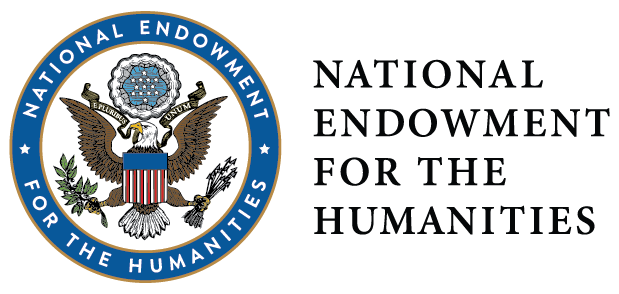Transformations in Deaf Studies: Implications for Sign Language Policy, Revitalization, and Rights
Skip other details (including permanent urls, DOI, citation information)
This presentation explores various transformations that inform Deaf Studies research, ranging from transformations in deaf networks to larger sign language networks and transformations in applied linguistics, society, and language ideologies, and the related potential impact on sign language policy and revitalisation. After discussing some new research lenses in Deaf Studies, such as visual methods, the presentation suggests some ways forward for Deaf Studies in terms of research priorities and rights discourses.
FUNDING
This work was supported by a “MOVE-IN Louvain” Incoming Post-doctoral Fellowship, co-funded by the Marie Curie Actions of the European Commission.
PUBLICATION FUNDING
This conference proceeding was made possible with the financial support of the National Endowment for the Humanities, Digital Humanities Advancement Grants [#HAA-258756-8, 2018]; and Gallaudet University: the Office of the Chief Bilingual Officer, Yeker Anderson Club, and Department of American Sign Language and Deaf Studies.
PUBLICATION TEAM
Patrick Boudreault, Editor
Tawny Hlibok Holmes, Conference Co-Chair, & Assistant Editor
Matthew Malzkuhn, Conference Co-Chair, & Assistant Editor & Video Editor
Ivy Davis, Production Editor
Brianna Keogh, Production Editor
Andrew Biskupiak, Production Assistant
Dirksen Bauman, Advisor
T.S. Writing Services, LLC
REFERENCES
- De Meulder, M. (2018). “So, why do you sign?” Deaf and hearing new signers, their motivation, and revitalisation policies for sign languages. Applied Linguistics Review, 10(4), 705-724. https://doi.org/10.1515/applirev-2017-0100
- De Meulder, M., Murray, J.J., & McKee, R. (eds). (2019). The legal recognition of sign languages: Advocacy and outcomes around the world. Bristol, UK: Multilingual Matters. Retrieved from http://www.multilingual-matters.com/display.asp?isb=9781788923996
- Duchêne, A., & Heller, M. (eds.) (2007). Discourses of endangerment: Ideology and Interest in the Defence of Languages. London, UK: Continuum. https://doi.org/10.1111/j.1467-9841.2008.00397_1.x
- Jaffe, A. (2007). Discourses of endangerment: Contexts and consequences of essentializing discourses. In A. Duchêne & M. Heller (Eds.), Discourses of Endangerment (pp. 57–75). London, UK: Continuum. Retrieved from https://www.worldcat.org/title/discourses-of-endangerment-ideology-and-interest-in-the-defence-of-languages/oclc/746853997.
- Johnston, T. (2006). W(h)ither the deaf community? Population, genetics, and the future of Australian Sign Language. Sign Language Studies, 6(2), 137–173. https://doi.org/10.1353/sls.2006.0006
- King, K. A. (2001). Language revitalization processes and prospects: Quichua in the Ecuadorian Andes. Clevedon, UK: Multilingual Matters. https://doi.org/10.1080/09500789908666757
- Kramsch, C. (2009). The Multilingual Subject. Oxford, UK: Oxford University Press. https://doi.org/10.1111/j.1473-4192.2006.00109.x
- Kusters, A., Spotti, M., Swanwick, R., & Tapio, E. (2017). Beyond languages, beyond modalities: Transforming the study of semiotic repertoires. Journal of Multilingual and Multicultural Development, 14(3), 219–232. https://doi.org/10.1080/14790718.2017.1321651
- Laakso, J., Sarhimaa, A., Åkermark, S.S., Toivanen, R. (2016). Towards openly multilingual policies and practices: Assessing minority language maintenance across Europe. Bristol, UK: Multilingual Matters. DOI: https://doi.org/10.21832/9781783094967
- Lamarre, P. (2013). Catching “Montréal on the move” and challenging the discourse of unilingualism in Québec. Anthropologica, 55(1), 41-56. Retrieved from https://www.semanticscholar.org/paper/Catching-%22Montréal-on-the-Move%22-and-Challenging-the-Lamarre/9d96d180ec20ae0034bfdcbc6d43f70109d67d74
- May, S. (2005). Language rights: moving the debate forward. Journal of Sociolinguistics, 9(3), 319-347. https://doi.org/10.1111/j.1360-6441.2005.00295.x
- May, S. (2018). Commentary - unanswered questions: Addressing the inequalities of majoritarian language policies. In L. Lim, C. Stroud, & L. Wee (Eds.), The Multilingual Citizen (pp. 65–72). Bristol, UK: Multilingual Matters. https://doi.org/10.1080/01434632.2018.1505251
- O’Brien, D., & Kusters, A. (2017). Visual methods in Deaf Studies: Using photography and filmmaking in research with deaf people. In A. Kusters, M. De Meulder & D. O’Brien (eds.) Innovations in Deaf Studies: The Role of Deaf Scholars (pp. 265-296). Oxford, UK: Oxford University Press. Retrieved from https://researchportal.hw.ac.uk/en/publications/visual-methods-in-deaf-studies-using-photography-and-filmmaking-i
- O’Rourke, B. (2019). Carving out breathing spaces for Galician: New speakers' investment in monolingual practices. In J. Jaspers & L. M. Madsen (Eds.), Critical Perspectives on Linguistic Fixity and Fluidity: Languagised Lives. New York, NY: Routledge. Retrieved from https://www.taylorfrancis.com/books/e/9780429469312/chapters/10.4324/9780429469312-5
- Patrick, D., & Freeland, J. (eds.) (2004). Language rights and language ‘survival’: Sociolinguistic and sociocultural perspectives. London, UK: Routledge. https://doi.org/10.4324/9781315760155
- Safar, J., & Webster, J. (2014). Cataloguing endangered sign languages at iSLandDS. iSLandDS, UClaN, Preston (Research Report). Retrieved from University of Central Lancashire, International Institute for Sign Languages and Deaf Studies website: https://islandscentre.files.wordpress.com/2014/08/report-endangered-sls_070814.pdf




